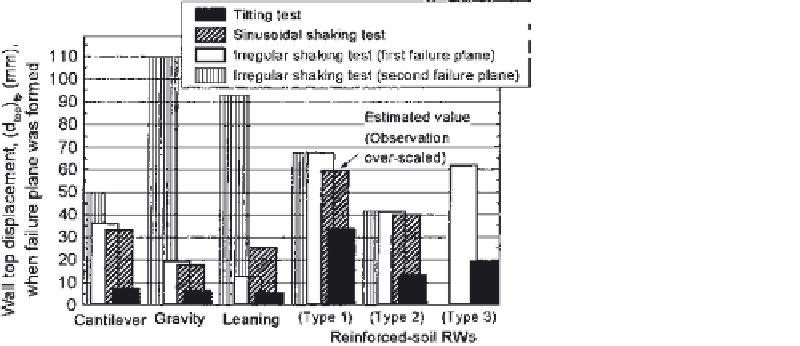Geoscience Reference
In-Depth Information
In the two types of shaking tests, the failure plane angle a was not directly
linked to (k
h
)
fp
. It is likely that the difference in the (k
h
)
fp
between the tilting and
shaking tests are due to the dynamic effects. As shown in Fig. 11, for each RW,
the horizontal displacement (d
top
)
fp
measured at the moment of the formation of a
failure plane at a distance of 5 cm below the top of the wall depended on the
loading conditions. It was larger in the two types of shaking tests than in the
tilting tests. This would be due to the following mechanism:
1. In the static tilting tests, the loading condition by which strain tends to
localize in a certain location continues for the largest duration among
the three types of test. For this reason, a shear band is easiest to develop
with the smallest deformation outside the shear band in the backfill,
resulting in the smallest displacement and the lowest (k
h
)
fp
at the
moment of shear band formation.
2. The opposite would be the case with the shaking tests using irregular
waves. Larger deformation outside the shear band in the backfill is
required before the development of a distinct shear band at a fixed
location, because the loading condition varies by time and space due to
different dynamic loading levels with effects of amplification/attenua-
tion and phase lag of response accelerations.
Further investigations are required on the above issues.
It can be also seen from Fig. 11 that the value of (k
h
)
fp
is generally larger for
the reinforced soil RWs than for the three conventional RWs.
Figure 11
Comparison of wall top displacements when a distinct failure plane was
formed.









Search WWH ::

Custom Search